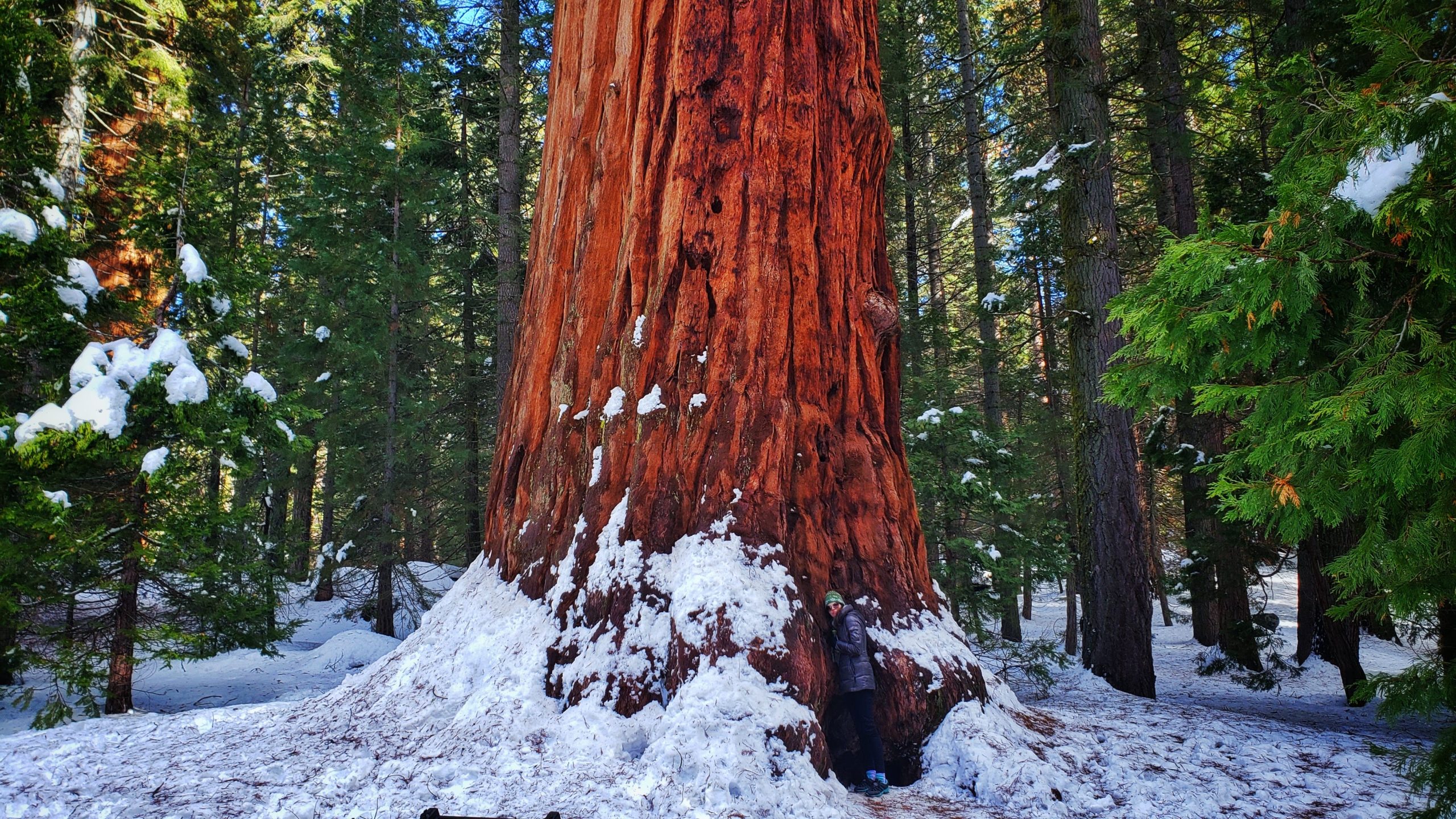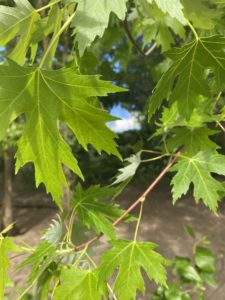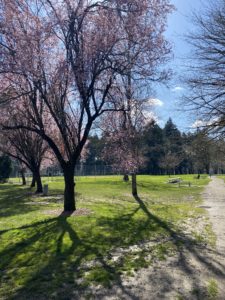
05 Jul Trees are our Teachers
Trees. Aren’t they great? Trees are our teachers and are a large part of the reason I’ve wanted to move back to Oregon for so long, to be situated in the temperate rain forest surrounded by trees.
I sit here now, hotter than I remember it being in July, and wonder which trees will continue to inhabit this place in 50 years time. No doubt the forest will change, but one thing will stay the same. I’ll breathe out what the trees breathe in. I’ll breathe in what the trees breathe out.

Qualities of Trees
Reciprocity. Exchanging things in mutual benefit. This is a quality of trees I admire. Generosity and equity, as well. Trees don’t discriminate who can and cannot eat from their fruit, take refuge in their shade. Trees are stable, for the most part. They can withstand storms and high wind, bending and bowing but rarely breaking, rooted deep or wide or both.
When they do fall, trees continue to participate in equal exchange. As they rot they carry on their lifecycle as home and sustenance for thousands of life forms – forest critters, birds, larvae, moss, lichen. Composted down to the fertile humus from which more seeds will grow and become great, reciprocal, generous, stable trees. Trees that exhale what we inhale, inhale what we exhale.
Clearing the Air
Do you remember at the beginning of the pandemic when the air cleared up and we saw pictures of skylines that had long since disappeared under the smog?
It seemed so quick to me. I was impressed with how efficient it was, the return to homeostasis, to fresh healthy air.
Could it be that we as humans, as part of this natural environment, share these impressive qualities of nature?
I think so. I think yes. We’ve just got one extra thing. We’ve got a mind. Thoughts, worries, attachments, desires, memories, fantasies, fear.
Where the Yoga Philosophy Fits In
This is what the ancient yogis got to working with long ago. What to do about this mind. Yogas citta vrtti nirodhah – yoga is the calming (nirodhah) of the fluctuations (vrttis) of the mind (citta). That’s what the whole system from Patanjali’s Yoga Sutras is all about. (I say it often and I’ll say it again, there is more than one traditional path to yoga*, all called yoga. Here I expound on just one.) 
Here’s the deal. We are nature, like trees. We are also conscious, like humans. As humans, we have a mind. Our minds, paradoxically, provide both the distractions to a practice and the means to attain the goal (finding balance, homeostasis, liberation from suffering, etc, etc).
We “overcome” the mind with the mind. How?
Yoga says by concentration. By focusing the mind. Despite all the obstacles (ignorance, ego, attachment, avoidance, and fear of death to name the main five), the goal of yoga* is to focus the mind and let the focus flow continuously. Then poof. The mind dissolves. Or so we read in the Yoga Sutras. I haven’t experienced this for my self yet. Trust me, I’m quite distracted.
What Causes the Distractions?
 Our senses. Our memories. We are sensory creatures with minds that remember our habits and happenstances so very easily.
Our senses. Our memories. We are sensory creatures with minds that remember our habits and happenstances so very easily.
Smells that remind you of the school cafeteria, which then reminds you of what happened to you in the school cafeteria. Which then reminds you of the social confusion of grade school. Which then reminds you of that insecure feeling that’s still so uncomfortably familiar and which you’re suddenly feeling…because of a smell.
 And we continue, looping and looping in the mind. Distracted from homeostasis, stability, reciprocity, presence. Trees don’t do this. Us people do.
And we continue, looping and looping in the mind. Distracted from homeostasis, stability, reciprocity, presence. Trees don’t do this. Us people do.
So trees are our teachers, and yoga is our practice. For this today I am grateful.
Obviously we’ll be doing tree pose in class this week. 🙂 Come practice on Zoom in our sweet virtual community!
*The yoga philosophy I study and teach the most about is called ashtanga yoga, the eight-fold path found in the Yoga Sutras of Patanjali, not to be confused with the practice of the same name developed and popularized by Pattabhi Jois, sexual predator and 20th century global yoga guru, from whose contributions to the practice we have vinyasa yoga, the familiar flow style many of us enjoy. An example of another path to yoga is karma yoga, or the yoga of action and service. The underlying thrust of karma yoga is dharma, or to do what you are here to do as best you can in service to others. Your dharma is your duty. We all have different dharma. You can read more about this in the Bhagavad Gita, if you’re interested. If you’ve been practicing yoga for a while there’s no doubt you’ve heard a mash up of many different traditional paths. That’s quite alright. If you are curious about all this, please let me know and I’ll make sure to write about it for you.
